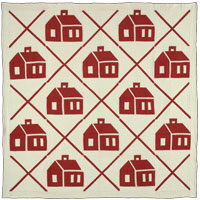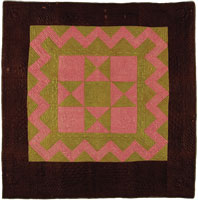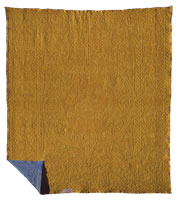Page content
Online Extras
Quilts Slideshow

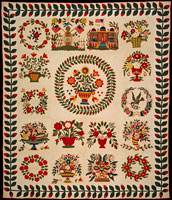
Craig McDougal
Baltimore album quilt, Sarah Anne W. Lankford and unknown makers, ca. 1850, gift of Marsha C. Scott
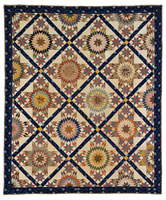
Craig McDougal
Star of Bethlehem and Le Moyne star quilt, Jones or Terry family, Virginia, 1850–60, gift of Thomas R. Terry honoring Lulie G. J. Terry
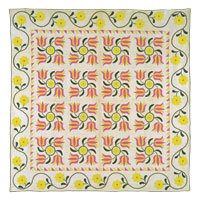
Craig McDougal
Tulip appliquéd quilt, Ann Margaret Rauch, Franklin County, Pennsylvania, 1849, gift of Sandra F. and Harry Fisher
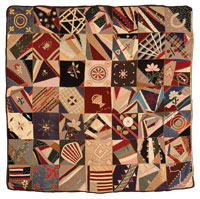
Craig McDougal
Virginia crazy quilt, Jane R. Savin Kent, Lancaster County or Northumberland County Virginia, 1902, gift of Donald Haynie
Quilts
A Photo Essay
by Linda Baumgarten and Kim Ivy
Colonial Williamsburg's collections preserve quilts covering centuries and continents. Almost as soon as colonists settled America, luxury quilts began arriving from overseas. The oldest in the collection date to about 1600; they came from India and southern Europe. Eighteenth-century instances include sophisticated silk-embroidered English quilts with designs of foliage and exotic flowering plants, many influenced by Indian textiles. Often, professional needleworkers and quilters produced them in workshops. American-made quilts at Colonial Williamsburg date from the eighteenth century to the twentieth and example such techniques, colors, and materials as colored and patterned worsted wholecloth, pieced and appliquéd patterns, and white bedcovers. Quilts made by Anglo Americans, Amish, Mennonites, Pennsylvania Germans, African Americans, and Hawaiians suggest American multiculturalism.
A quilt could express artistic impulses in a practical and warm bedcover for loved ones, or provide neighbors and relatives an opportunity to work together and socialize. Some, such as album quilts, remember faraway friends and relatives. To some, quilts are objects to be hung on the wall, their artistry uplifting and inspiring. To others, quilts speak of family, friends, memory, and tradition.
Historic quilts record the creativity of people who lived before. Such museums as Colonial Williamsburg preserve and display their work in part to help illuminate the stories of people whose lives often go unrecorded—homemakers, as well as professional quilters. They are the subject of a book by curators Linda Baumgarten and Kimberly Ivey. Quilts: The Colonial Williamsburg Collection, due out in 2014, is to showcase about 150.
-Linda Baumgarten and Kim Ivy

